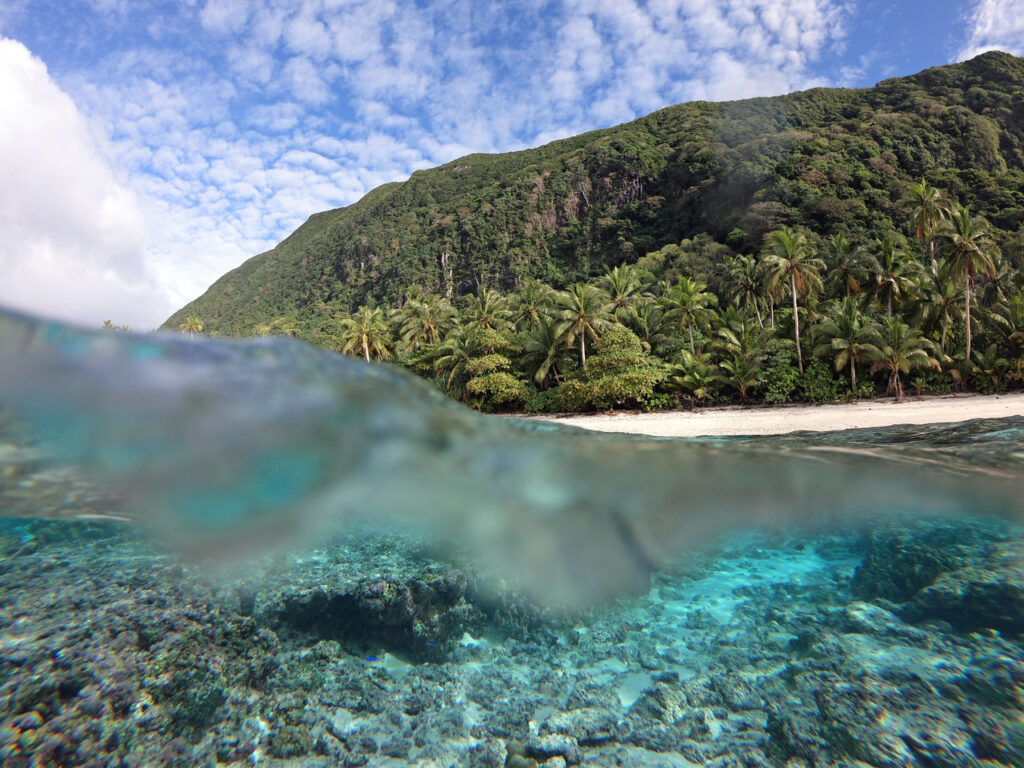Observed blooms of algae including caulerpa and valonia in the coral reef ecosystems of Ofu and Olosega are of concern to coastal managers. It has been hypothesized that excess nutrients from the villages may be causing this problem. This study will provide nutrient data for the area to determine if there is spatial correlation between algal outbreaks and elevated nutrients. Additionally, dietary tracer (sucralose/caffeine) data will be used to determine if human waste is reaching the coastal ocean.

Why We Care
At the request of the American Samoa Coral Reef Advisory Group (CRAG), this project will quantify the extent to which nutrients from the villages of Ofu and Olosega are contributing to the observed benthic algal blooms occurring on the nearshore reefs. Excess nutrients can be harmful to coral reefs in a variety of ways, including fueling algal growth which can overgrow and outcompete the reefs. While measuring nutrients in coastal waters is relatively straightforward, understanding the source of nutrients is more complex. Distinguishing between natural and anthropogenic nutrients, as well as between different types of anthropogenic sources (e.g. human vs agriculture) can be problematic.
What We Are Doing
This study will quantify two chemicals found only in the human diet which persist through the digestive process, and through septic systems: caffeine (found in a variety of products including coffee, soda and chocolate) and sucralose (an artificial sweetener). The presence of either of these compounds in coastal waters would confirm that human waste is reaching the coastal waters, and if either compound is well correlated with nutrient concentrations, that would suggest that human waste is a primary driver of nutrient dynamics. Bottom water samples at sites in both study areas will be collected as part of the ongoing quarterly CRAG surveys. Water samples will be shipped to the NCCOS contract lab at Texas A&M University, where they will be analyzed by the Geochemical and Environmental Research Group for nitrate, nitrite, ammonium, urea, total nitrogen, orthophosphate, total phosphorus, and silica, as well as caffeine and sucralose which serve as unique tracers of human waste. Standard NOAA NCCOS protocols and techniques will be employed.
Benefits of Our Work
These data will determine if excess nutrients, which can be harmful to coral reefs, are present in this system, and if these excess nutrients are a result of human waste. Identifying the source of these nutrients will help coastal managers implement effective management practices.
